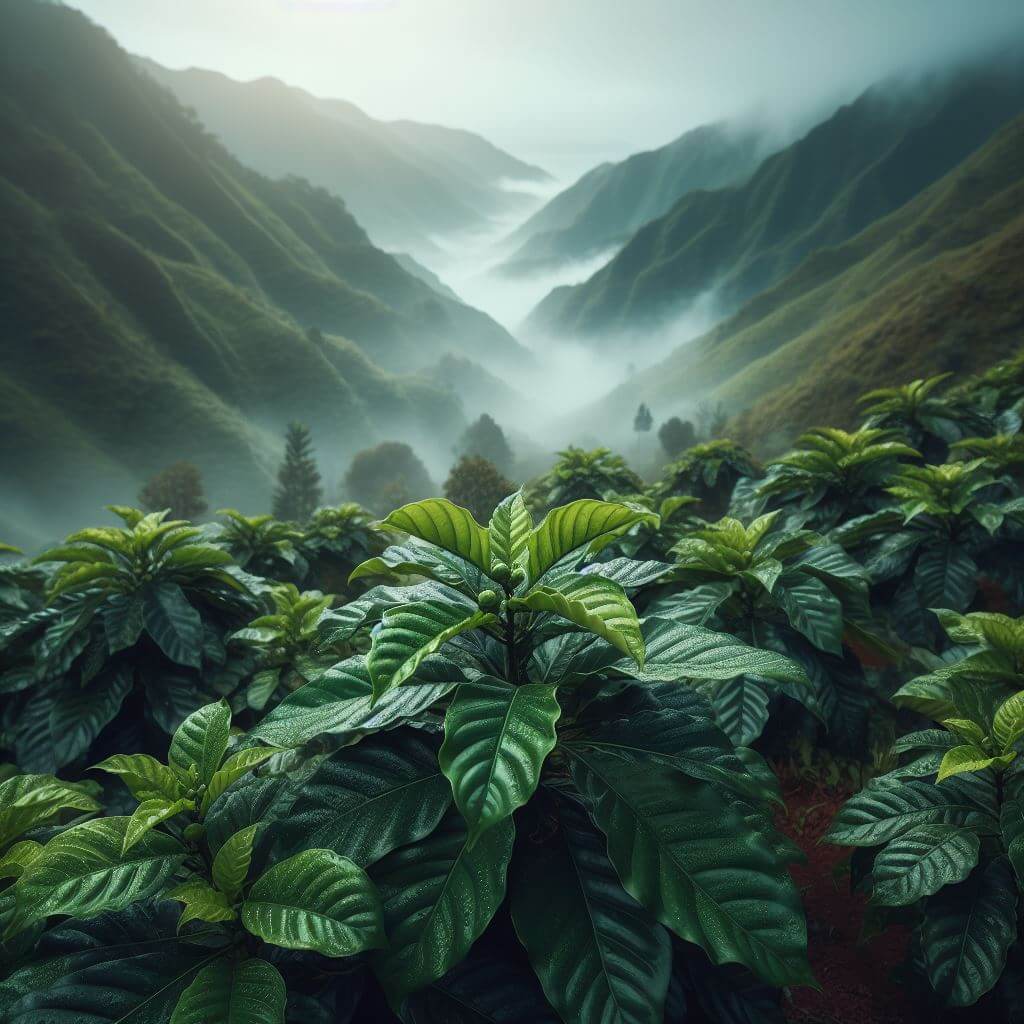
The complex relationship between altitude and coffee bean development is a cornerstone of specialty coffee production. The cool climate at an altitude of 800 to over 2,000 meters above sea level is not just a backdrop for growing coffee; they are active participants in shaping the fate of beans. In this altitude range, the temperature drops by about 6°C for every 1,000 meters of altitude. This gradual decrease in temperature significantly alters the development time frame and physiology of the coffee plant, resulting in beans that differ markedly from their counterparts at lower altitudes in both structure and flavor.
At these altitudes, the diurnal temperature variation – the difference between day and night temperatures – becomes more pronounced. This fluctuation is critical because it slows down the coffee plant’s overall metabolism, including photosynthesis. As a result of this delayed process, the beans ripen more slowly, allowing them to not only accumulate more sugar but also develop a stronger cell structure. These dense beans are packed with flavor precursors that contribute to the coffee’s final flavor profile.
Higher altitude exposes coffee plants to higher levels of stress, including more intense exposure to UV rays. This environmental stress increases the production of certain compounds in the beans, such as chlorogenic acid, which can have a profound effect on flavor, adding complexity to the beans and providing the nuances of flavor prized in the coffee world. This natural enrichment process also results in increased levels of antioxidants in the beans, which are believed to have health benefits and affect the acidity and sweetness of the coffee.
One of the most telling effects of high-altitude growth on coffee beans is observed in their physical density. Beans become harder and more compact due to stunted growth and reduced oxygen levels. Thicker grains require more precise roasting conditions to fully reveal the flavor. They can withstand a high temperature for a longer period, allowing a more controlled caramelization of the sugar inside, without the risk of burning that suffers from less dense grains.
In addition, the unique environmental conditions at high altitudes often mean that coffee plants are grown in a wider variety of conditions. These include the shade of large trees in forests, which not only create a natural canopy but also contribute to the health of the soil due to a richer composition of organic substances. This biodiversity can further enhance the bean’s specific flavor notes, adding layers of flavor unique to the bean’s microclimate.
How Altitude Affects Flavor Profiles
This effect is based on the acid content of the beans, a key factor in flavor development. High mountain beans, grown in cooler climates and richer biodiversity at altitudes above 1,200 meters, have a significantly different acid composition compared to their low-growing counterparts. The prominent presence of citric, malic, and phosphoric acids in these beans contributes to a bright and complex flavor profile. Citric acid, for example, infuses coffee with hints of lemon and orange, creating a refreshing citrus aroma. Malic acid, on the other hand, creates flavors reminiscent of apples and pears, offering a delightful sweetness paired with crisp acidity. Phosphoric acid completes this trio, adding effervescence that enhances the coffee’s overall clarity and vibrancy. It is this delicate balance of acids grown at high altitudes that defines the bean’s flavor profile, distinguishing it from the more uniform and often harsher profiles of beans grown at lower altitudes.
The effect of altitude extends not only to acidity but also to the inherent sweetness and texture of the beans. The slower ripening process of high-altitude beans helps produce more complex sugars, contributing not only to the beans’ inherent sweetness but also to their body and overall flavor. This increased sweetness often manifests as caramel, honey, or fruity flavors, counterbalancing the acidity of the beans and creating a harmoniously complex cup of coffee.
The special conditions of the high mountain environment serve as a natural filter for the quality of coffee beans. The harsher conditions and rigors of growth at such altitudes mean that only the hardiest and most adaptable coffee plants thrive.
The effect of altitude on the flavor profiles of coffee beans is further accentuated by regional differences. For example, coffee beans from the high mountains of Ethiopia have floral and fruity notes reminiscent of local flora and fauna, while coffee beans from the highlands of Colombia can present notes of chocolate, nuts, and cane sugar, reflecting the lush, biodiverse landscapes of South America.
Roasting And Brewing High-Altitude Coffee
When roasting coffee beans grown at altitude, the roaster must take into account the increased density of the beans and the complex sugar content. These beans require a carefully calibrated roasting process to achieve the perfect flavor profile. The goal is to apply heat in a way that gradually breaks down complex sugars into simpler ones, creating a sweet and flavorful roast without burning the beans or cooking delicate flavors. Light to medium roast profiles are often preferred for these beans because they retain the beans’ inherent acidity and unique flavor notes, such as the floral, citrus, or fruity undertones characteristic of coffee grown at high altitudes. Dark roast, despite its appeal, can sometimes overshadow the nuances of taste with smoky and bitter notes.
The process of roasting highland beans often involves a slower approach, allowing the heat to penetrate the dense structure of the bean without causing the outer layers to burn before the inner layer is fully roasted. This method ensures even roasting, emphasizing the sweetness of the beans and reducing the risk of an unwanted bitter aftertaste. Accurate control of temperature and time is paramount. For example, slightly increasing the roasting temperature can speed up the Maillard reaction, which is responsible for creating many of the complex flavors and aromas of coffee. However, temperatures that are too high can result in the loss of the delicate floral and fruity notes that make high-altitude coffee so special.
Brewing these carefully roasted beans is the next step in making a fine cup of coffee. The chosen brewing method can significantly affect the final taste. For example, pouring methods that allow better control of water temperature and brewing time can emphasize the acidity and sweetness of the coffee. Similarly, Aeropress or French press methods can extract rich, complex flavors from beans without adding the bitterness sometimes associated with over-extraction. Grind size, water quality, and temperature must be carefully controlled to ensure that the unique flavor profile of high-altitude coffee is fully expressed.
Temperature play a crucial role in the brewing process; Water that is too hot can extract unwanted compounds, while water that is too cool may not extract enough flavor from the beans. Finding the right temperature, usually between 195°F and 205°F (90.6°C – 96.1°C), is critical for optimal extraction. In addition, the water used for brewing must be clean and free of impurities, as the quality of the water can significantly affect the taste of the coffee.

